Related Research Articles

Alfred Habdank Skarbek Korzybski was a Polish-American independent scholar who developed a field called general semantics, which he viewed as both distinct from, and more encompassing than, the field of semantics. He argued that human knowledge of the world is limited both by the human nervous system and the languages humans have developed, and thus no one can have direct access to reality, given that the most we can know is that which is filtered through the brain's responses to reality. His best known dictum is "The map is not the territory".
Sanity refers to the soundness, rationality, and health of the human mind, as opposed to insanity. A person is sane if they are rational. In modern society, the term has become exclusively synonymous with compos mentis, in contrast with non compos mentis, or insanity, meaning troubled conscience. A sane mind is nowadays considered healthy both from its analytical - once called rational - and emotional aspects. According to the writer G. K. Chesterton, sanity involves wholeness, whereas insanity implies narrowness and brokenness.
General semantics is a school of thought that incorporates philosophic and scientific aspects. Although it does not stand on its own as a separate school of philosophy, a separate science, or an academic discipline, it describes itself as a scientifically empirical approach to cognition and problem solving. It has been described by nonproponents as a self-help system, and it has been criticized as having pseudoscientific aspects, but it has also been favorably viewed by various scientists as a useful set of analytical tools albeit not its own science.
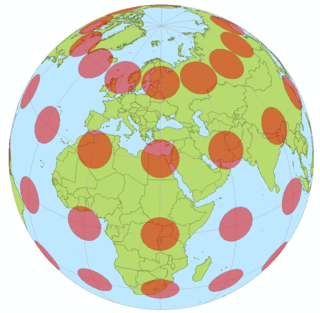
The map–territory relation is the relationship between an object and a representation of that object, as in the relation between a geographical territory and a map of it. Mistaking the map for the territory is a logical fallacy that occurs when someone confuses the semantics of a term with what it represents. Polish-American scientist and philosopher Alfred Korzybski remarked that "the map is not the territory" and that "the word is not the thing", encapsulating his view that an abstraction derived from something, or a reaction to it, is not the thing itself. Korzybski held that many people do confuse maps with territories, that is, confuse conceptual models of reality with reality itself. These ideas are crucial to general semantics, a system Korzybski originated.
Linguistic determinism is the concept that language and its structures limit and determine human knowledge or thought, as well as thought processes such as categorization, memory, and perception. The term implies that people's native languages will affect their thought process and therefore people will have different thought processes based on their mother tongues.

The semantic differential (SD) is a measurement scale designed to measure a person's subjective perception of, and affective reactions to, the properties of concepts, objects, and events by making use of a set of bipolar scales. The SD is used to assess one's opinions, attitudes, and values regarding these concepts, objects, and events in a controlled and valid way. Respondents are asked to choose where their position lies, on a set of scales with polar adjectives. Compared to other measurement scaling techniques such as Likert scaling, the SD can be assumed to be relatively reliable, valid, and robust.
The structural differential is a physical chart or three-dimensional model illustrating the abstracting processes of the human nervous system. In one form, it appears as a pegboard with tags. Created by Alfred Korzybski, and awarded a U.S. patent on May 26, 1925, it is used as a training device in general semantics. The device is intended to show that human "knowledge" of, or acquaintance with, anything is partial—not total.
The Institute of General Semantics (IGS) is a not-for-profit corporation established in 1938 by Alfred Korzybski, to support research and publication on the topic of general semantics. The Institute publishes Korzybski's writings, including the seminal text Science & Sanity, and books by other authors who have studied or taught general semantics, such as Robert Pula, Irving J. Lee, Wendell Johnson, and Stuart Chase. Every year since 1952, it has sponsored the Alfred Korzybski Memorial Lecture, with presenters from a broad range of disciplines, from science to medicine to entertainment, including names like actor Steve Allen, psychologist Albert Ellis, scientist and visionary R. Buckminster Fuller, linguist Allen Walker Read, and philosopher F. S. C. Northrop. The Institute offers periodic seminars, workshops and conferences and is headquartered in New York City.
Gad Horowitz is a Canadian political scientist. He is a professor emeritus at the University of Toronto.
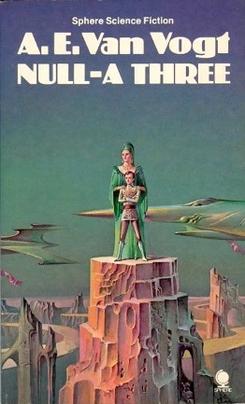
Null-A Three, usually written Ā Three, is a 1985 science fiction novel by Canadian-American writer A. E. van Vogt. It incorporates concepts from the General semantics of Alfred Korzybski and refers to non-Aristotelian logic.
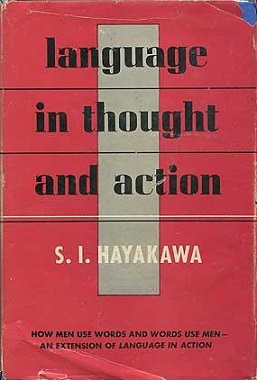
Language in Thought and Action is a 1949 book on general semantics by Samuel Ichiye Hayakawa, based on his previous work Language in Action (1939). Early editions were written in consultation with different people. The 5th edition was published in 1991. It was updated by Hayakawa's son, Alan R. Hayakawa and has an introduction by Robert MacNeil. The book has sold over one million copies and has been translated into eight languages.
Insight into human symbolic behavior and into human interaction through symbolic mechanisms comes from all sorts of disciplines: not only from linguistics, philosophy, psychology, and cultural anthropology, but from attitude research and public opinion study, from new techniques in psychotherapy, from physiology and neurology, from mathematical biology and cybernetics. How are all these separate insights to be brought together? ...I have examined the problem long enough to believe that it cannot be done without some set of broad and informing principles such as is to be found in the General Semantics of Alfred Korzybski.

Nicholas Johnson is an American academic and lawyer. He wrote How to Talk Back to Your Television Set and was a Federal Communications Commission commissioner from 1966 to 1973. He is retired from teaching at the University of Iowa College of Law, with an emphasis on communications and Internet law, and since 2006 has posted over 1000 blog essays.
The following outline is provided as an overview of and topical guide to epistemology:
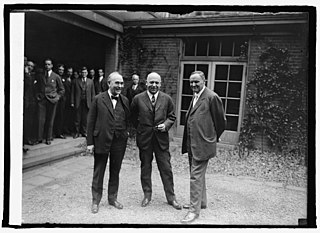
William Alanson White was an American neurologist and psychiatrist.

Levels of Knowing and Existence: Studies in General Semantics is a textbook written by Professor Harry L. Weinberg that provides a broad overview of general semantics in language accessible to the layman.
"All models are wrong" is a common aphorism and anapodoton in statistics. It is often expanded as "All models are wrong, but some are useful". The aphorism acknowledges that statistical models always fall short of the complexities of reality but can still be useful nonetheless. The aphorism is generally attributed to George E. P. Box, a British statistician, although the underlying concept predates Box's writings.

The Community of Scholars is a 1962 book about higher education by Paul Goodman with his observations on its function and proposals for its future.
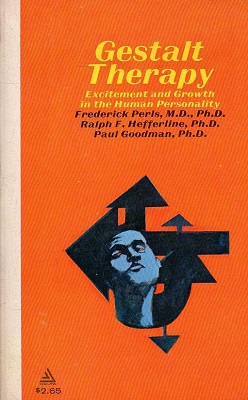
Gestalt Therapy is a 1951 book that outlines an extension to psychotherapy, known as gestalt therapy, written by Fritz Perls, Ralph Hefferline, and Paul Goodman. Presented in two parts, the first introduces psychotherapeutic self-help exercises, and the second presents a theory of personality development and growth.
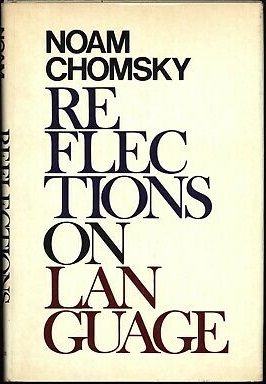
Reflections on Language is a 1975 book in which MIT linguist Noam Chomsky argues for a rationalist approach to human nature. Under this approach, specific capabilities are innate to humans, as opposed to an empiricist approach in which there is no innate human nature but rather a "blank slate" upon which psychological and social forces act. The New York Times selected the book as among the year's best.

Gustaf Benjamin Strömberg was a Swedish-born American astronomer who worked at the Mount Wilson Observatory in California. He went on to examine ideas on the non-physical world, the soul, psychic and other phenomena that would now be termed the paranormal, making him a pioneer of the study of the paranormal. Interpreting ideas from mathematical physics on waves and fields, he suggested that living cells were influenced by such invisible entities and that human memories could be immortal, as also claiming a mathematical support for the existence of a soul.
References
- ↑ Korzybski, Alfred (2023) [1933]. Science and Sanity: An Introduction to Non-Aristotelian Systems and General Semantics (6 ed.). Institute of General Semantics. ISBN 9781970164220.
- 1 2 Temple, G. (1935). "Science and Sanity: An Introduction to Non-Aristotelian Systems and General Semantics. By Alfred Korzybski . Lancaster, Penn., and New York: The International Non-aristotelian Library Publishing Company, 1933. Pp. xx + 798". Philosophy . 10 (38): 245–247. doi:10.1017/S0031819100018635. ISSN 0031-8191.
- 1 2 Baker, Joseph E. (1945). "The Science of Man". College English . 6 (7). National Council of Teachers of English: 395–401. doi:10.2307/371069. ISSN 0010-0994. JSTOR 371069 . Retrieved 2025-01-10.
- ↑ Review by Bobby Matherne: https://southerncrossreview.org/26/matherne-bookreview.htm
- ↑ Levinson, Martin H. (2024). "BOOK REVIEW". ETC: A Review of General Semantics. 81 (1). Institute of General Semantics: 147–148. ISSN 0014-164X.
- ↑ Reesinck, J. J. M. (1946). "On Korzybski". Synthese . 5 (5/6). Springer: 231–236. doi:10.1007/BF02274385. ISSN 0039-7857. JSTOR 20113869 . Retrieved 2025-01-12.
- ↑ Haslam, Gerald (1970). "Korzybski's Quest". ETC: A Review of General Semantics. 27 (1). Institute of General Semantics: 67–80. ISSN 0014-164X. JSTOR 42574611 . Retrieved 2025-01-10.
- ↑ Lahman, Mary P. (2013). "General Semantics: Understanding Korzybski's Formulations". ETC: A Review of General Semantics. 70 (2). Institute of General Semantics: 111–119. ISSN 0014-164X. JSTOR 42579251 . Retrieved 2025-01-10.
- ↑ Korzybski, A. (1933). Science and sanity. An introduction to non-Aristotelian systems and general semantics. International Non-Aristotelian Library.
- ↑ Kenneth G. Johnson - Korzybski on Research: Suggestions from Science and Sanity, available at the book General Semantics in Psychotherapy: Selected Writings on Methods Aiding Therapy pp. 185–201
- ↑ Robertson, Thomas (1949-06-09). "Views and Reviews: SCIENCE AND SANITY". The New English Weekly. XXXV (9): 103–104 – via reproduction in General Semantics Bulletin, Numbers 1&2, Autumn-Winter 1949–1950, Institute of General Semantics, Lakeville, CT, pp. 51–52.
- ↑ Korzybski, Alfred (2010) [1948]. "Author's Note". Selections from Science and Sanity: An Introduction to Non-Aristotelian Systems and General Semantics (2 ed.). Institute of General Semantics. p. xi. ISBN 9780982755914.